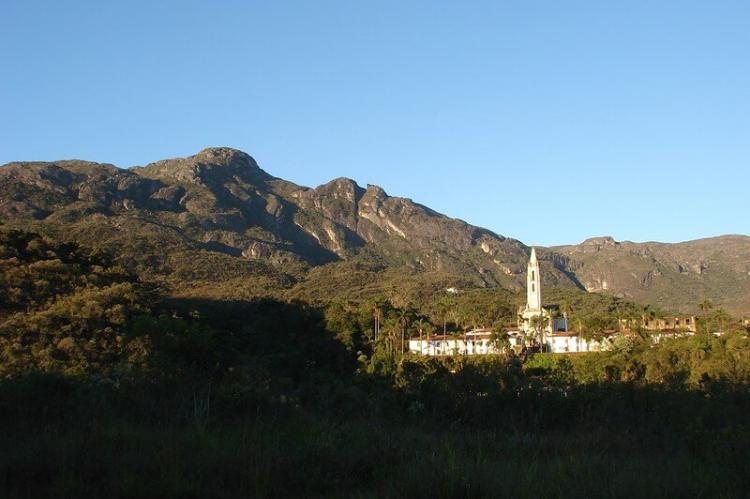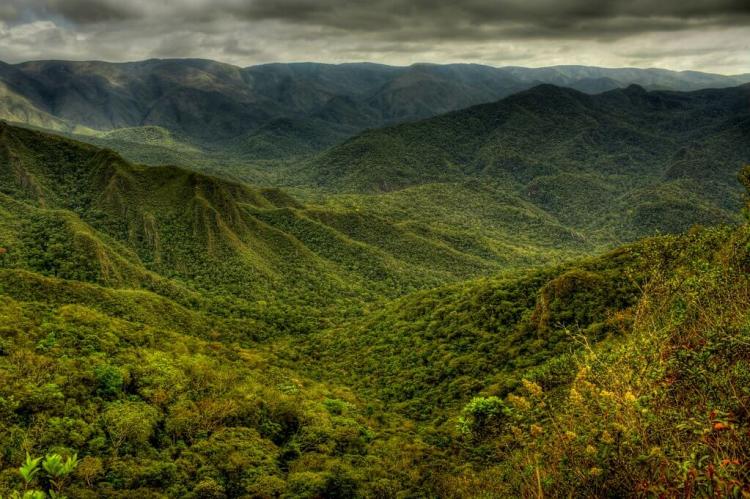Serra do Espinhaço: Espinhaço Range Biosphere Reserve (Brazil)
The Serra do Espinhaço mountain range represents Brazil's largest and most continuous Precambrian orogenic belt. The Espinhaço Range Biosphere Reserve includes 16 protected areas: National Parks, State Parks, State Ecological Stations, and Municipal Natural Parks.
Serra do Espinhaço
The Serra do Espinhaço is a mountain range in Brazil that runs roughly north and south through Minas Gerais and Bahia, extending for approximately 1,100 km (680 mi). The historic town of Diamantina is located in these mountains.
The Serra do Espinhaço represents the largest and most continuous Precambrian orogenic belt in Brazil's territory, serving as a water divider between the São Francisco River basin and the river basins that drain directly into the Atlantic Ocean, including the Doce, Jequitinhonha and Pardo rivers.
Pico do Sol, the highest peak, rises to 2,072 m (6,798 ft). Along the length of the cordillera, alternating elevations allow for an enormous diversity of climate and rainfall conditions.
Since the early 18th century, these mountains have been mined for gold, diamonds and semiprecious stones. They are now economically important chiefly for their vast store of high-grade iron ore and manganese. The mountains are also the world's chief source of quartz crystals.
The Chapada Diamantina, located on the Atlantic plateau within the Brazilian Highlands and divided into several mountain groups, is a northern extension of the Serra do Espinhaço range.
Espinhaço Range Biosphere Reserve
The Espinhaço Range Biosphere Reserve includes 16 protected areas (National Parks, State Parks, State Ecological Stations, and Municipal Natural Parks), forming the core areas.
The Biosphere Reserve is not a single block, and northern Minas Gerais has a discontinuity that divides the cordillera into two segments.
In addition to natural values, cultural assets such as the colonial towns of Ouro Preto, Congonhas and Diamantina, and artistic and religious manifestations are still kept alive along the entire length of the cordillera.
The unique rupestrian grasslands dominate at elevations over 500 m (1,600 ft) in the Serra do Espinhaço range. This vegetation type predominantly comprises a more or less continuous herbaceous stratum and small, sclerophyllous evergreen bushes.
Within the Espinhaço Range Biosphere Reserve, only a few areas have been intensely inventoried. However, it is estimated that there are approximately 3,000 plant species. Approximately 30% of the taxa are estimated to be exclusive to the rupestrian fields, representing about 1,000 - 2,000 endemic species.
Endemism is also observed in the fauna: endemic birds, mammals, amphibians, reptiles, and fishes have been recorded.
The extent of the Espinhaço Range Biosphere Reserve (over 3 million ha or 7.5 million acres) and its biological, geomorphological and historical importance justify implementing measures to preserve this mountain complex.
The population of the Biosphere Reserve is approximately 642,000. It includes the indigenous group of Pataxó, several quilombola (runaway enslaved people) communities, religious groups or existentialist sects, and the people living in 'gold towns' built by bandeiras.
Bandeiras were groups of explorers looking for gold in the 18th century who built mining centers, ranches, and register posts, which eventually developed into commercial centers and later on into cities and districts.
![Espinhaço Range, Brazil - via Wikimedia Commons by regiov [CC BY-SA 2.0 (https://creativecommons.org/licenses/by-sa/2.0)] Lapinha da Serra,](/sites/default/files/styles/large/public/espinhaco_range_opt%20%281%29.jpg?itok=iwYLnrCi)
![Espinhaço Range, Brazil - via Wikimedia Commons by regiov [CC BY-SA 2.0 (https://creativecommons.org/licenses/by-sa/2.0)] Espinhaço Range, Brazil](/sites/default/files/styles/large/public/serra_do_espinhaco_opt%20%281%29.jpg?itok=yMgnjKO1)
![Panoramic view at Lapinha da Serra, Espinhaço Mountains, Minas Gerais, Brazil - via Wikimedia Commons by Sudhertzen [CC BY-SA 4.0 (https://creativecommons.org/licenses/by-sa/4.0)] Panoramic view at Lapinha da Serra, Espinhaço Mountains, Minas Gerais, Brazil.](/sites/default/files/styles/large/public/lagoa_da_lapinha_espinhaco_opt%20%281%29.jpg?itok=P3XyRQeq)

